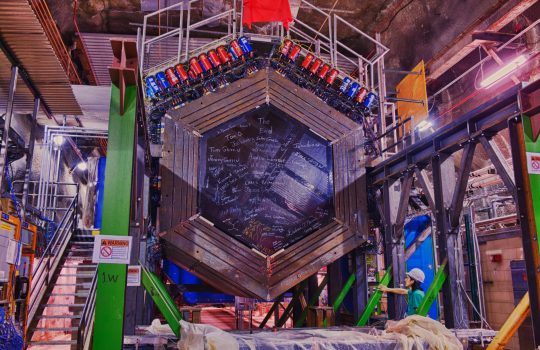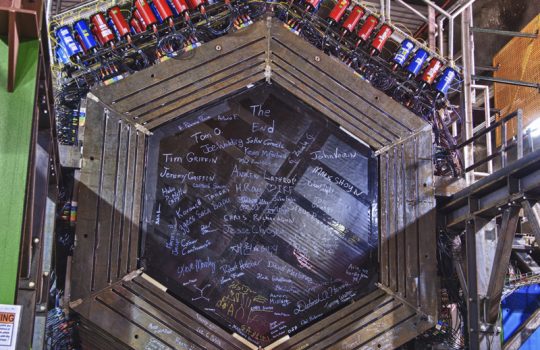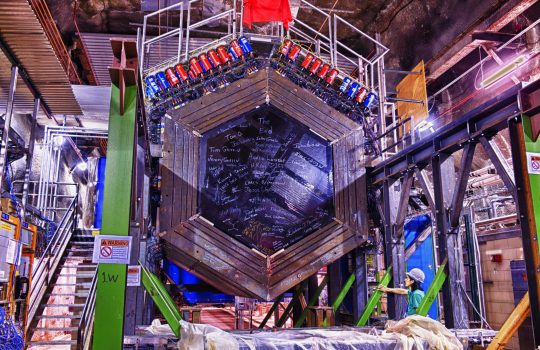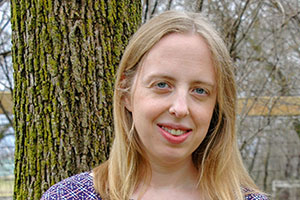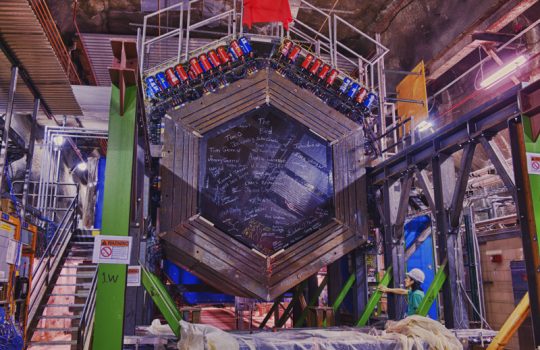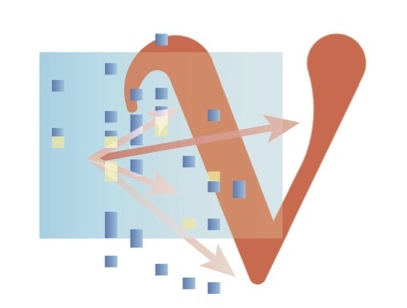MINERvA successfully completes its physics run
On Feb. 26, a team on Fermilab’s MINERvA neutrino experiment gathered around a computer screen to officially conclude its data acquisition. Even with the data collection over, the work marches on. MINERvA now turns its attention to analyzing the data it has collected over the past nine years of its run.

